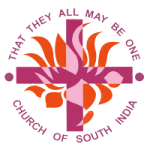
Church of South India History
The Church of South India is a union of churches with varying traditions – Anglican, Methodist, Congregational, Presbyterian, and Reformed. It was inaugurated on September 27, 1947, after protracted negotiation among the churches concerned. Originally organized into 16 dioceses, each under the spiritual supervision of a bishop, the church as a whole is governed by a synod, which elects a moderator (presiding bishop) every 2 years. Episcopacy is thus combined with Synodical government, and the church explicitly recognizes that Episcopal, Presbyterian, and Congregational elements are all necessary for the church’s life. The Scriptures are the ultimate standard of faith and practice. The historic creeds are accepted as interpreting the biblical faith, and the sacraments of Baptism and the Lord’s Supper are recognized as of binding obligation.
Discussions concerning union began at a conference at Tranquebar (now Tarangambadi) in 1919, and in 1947, after India attained independence, the union was completed.
The Church of South India has its own service book and communion service, both of which draw from several denominational sources. It is in limited communion with the Anglican Church and the Episcopal Church of the United States. The union, especially its reconciliation of the Anglican doctrine of apostolic succession with the views of other denominations is often cited as a landmark in the ecumenical movement.
The Church of South India has 4.5 million members and 15,000 congregations in 24 dioceses (including, for historical reasons, one diocese in northern Sri Lanka). The CSI runs 2,000 schools, 130 colleges and 104 hospitals. In the 1960s, the Church became conscious of its social responsibility and started organizing rural development projects. There are 50 such projects all over India, 50 training centers for young people, and 500 residential hostels for a total of 35,000 children.
The Motto and the Cross
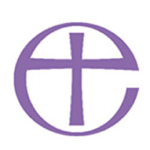
Anglican
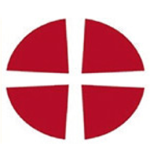
Methodist
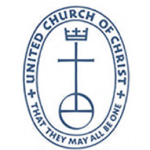
Congregational
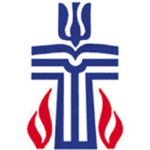
Presbyterian
The words, “THAT THEY ALL MAY BE ONE, CHURCH OF SOUTH INDIA” are embossed in a circle around the Lotus and the Cross. These words, as we know, are taken from the high priestly prayer of our Lord Jesus Christ who prayed not only for the “Church,” but also for the whole world. This universality is is expressed by placing the words in the form of a circle symbolizing not only the universe but also the inclusive nature of the Church.
“That they all may be one; as thou, Father, art in me, and I in thee, that they also may be one in us…” (John 17:21), is an inclusive affirmation showing explicitly that Christ is the Head of the Church, His body. It also symbolizes the prayer of the Church that not only Churches need to be united but all the people of India which can be interpreted as a meaningful prayer for national integration.
The imposing central position of the Cross in the Logo conveys the idea that the indefatigable, self-less, supreme sacrifice of Jesus on the Cross is the basis of the Church and its faith. The Cross runs through the Lotus depicting its cleansing act working in the hearts of the members of the Church and restoring them to the pristine purity of heaven.
The Logo of the Church of South India is as important and significant as the formation of the Church of South India through the process of unification. The Lotus and the Cross used in the Logo possess a rich cultural history and heritage which will help us in the understanding of the significance of the unification and our call and mission as members of this great and unique church.
The Lotus, a typical Indian flower, in Mythology is supposed to be not only a temple flower but also the seat of the creator. “Pankajam,” one of the Indian names given to the Lotus has a very significant meaning that “it is born in mud.” The Lotus blooms at sunrise and withers at sunset, in other words it lives as long as it can receive the sunrays hence it is also called “Thammipuvu,” meaning flower of the sun. Whether it means “born in the mud” or “flower of the sun,” to the Indian Church, it stands to be interpreted as symbolizing the composition, nature and role of the members of the Church of South India in the bond of the union and in the context of being indigenous and also being dependent on the grace of God.
The petals of the Lotus and the arms of the Cross are beautifully intertwined together with the fiery tongues of the Holy Spirit. It is an authentic Indian expression of people’s communion with God. The original colors, red (for life) and purple (for piety and ecclesiastical) on a white backdrop (for purity) implicitly communicate the nature of the mystical union, where, an inseparable companionship is established which, again, is a typical Indian thought form.
The imposing central position of the Cross in the Logo conveys the idea that the indefatigable, self-less, supreme sacrifice of Jesus on the Cross is the basis of the Church and its faith. The Cross runs through the Lotus depicting its cleansing act working in the hearts of the members of the Church and restoring them to the pristine purity of heaven.
The four ends of the cross made of equal size symbolizes the equality and also the contextual peaceful co-existence and communal harmony.
The Church of South India (CSI) is a member of the Anglican Communion. Its Bishops participate in the Lambeth Conferences and it has representation on the Anglican Consultative Council. The CSI is in full communion with the Malankara Mar Thoma Syrian Church of India and the Church of North India (CNI). It is a member in the World Council of Churches and the National Council of Churches in India.
The CSI, CNI, and Mar Thoma Church jointly formed the Communion of Churches in India (CCI) in 1978 for mutual recognition of the ministry and leaders, inter communal relationship, and to explore possibilities of working together especially in the field of evangelization in India and other areas of cooperation in the fulfilment of the mission of the Church.
